
We kicked off our multi-city event series on Wednesday, June 28 at wework’s very cool new space in Tysons Corner, VA. Led by moderator Zak Kidd, Co-founder, and COO of Swingspace, the panel touched on several subjects around how the notion of the workplace is changing and how we work today and may work in the future. Even though it was the end of the typical work day, wework was buzzing with activity in addition to our event, which added another layer to our discussion about the nature of work!
Our panel represented diverse viewpoints and experiences which facilitated the very lively discussion.
The spirited discussion began with each panelist’s self-introduction – Kyle predicted he would have the least to say, but as a representative of the “end user” community he contributed an important perspective to a panel made up of workspace professionals. Kyle said that while he is not a designer, architect or engineer, he gets the benefit of the work of great architectural and engineering design!
Kley, speaking for wework space and talked about their mission to provide space that helps people do business better. He also appreciated Kyle’s participation in that the voice from those who are not architects and designers are the audience they are trying to reach so to demonstrate that life within your office can be more exciting.
Jodi leads a workplace strategy and changes management group in the DC office of CallisonRTKL a global architecture and engineering firm. She works with public and private sector clients to help them understand how they work, what works best for them, and how to manage the changes to get them from where they are today to where they want to be tomorrow.
Steve Polo, the managing partner of OPX, described the mission of their design consultancy as “helping companies work better, integrating three things all companies have, people, tools, and space.” With that lead in, the conversation began. Here are the five key takeaways:
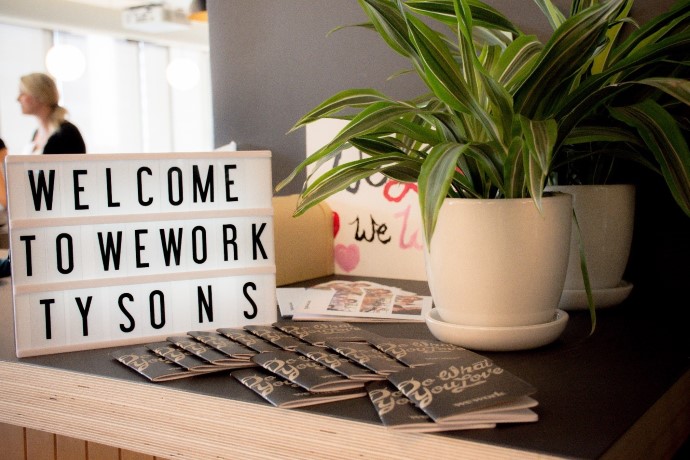
Space is just one tool that factors into workplace design
Steve: Space is an enabler; it is a tool, not “the tool.” It needs to align with an organization’s cultural attributes, how they do business and support what they need to accomplish. All these factors need to work together to make a coherent design.
On translating vision into concrete design solution
Jodi: Building the framework for successful design is key to project success.
Initial discussions with a client are the most important part of an architectural project. Unfortunately, that is often the part that gets cut, due to time, budget and the need to get clients in a space quickly. That is when you can set the vision, who are you? What is your culture today? What do you want it to be in the future? It is about bringing the vision together with how the work gets done. It is the work that gets done up front, looking at all the data and understanding the people, and where they are now and where they want to be in the future.
A lot more time needs to be spent up front, checking in on “this is the vision, this is where we are going, this is what that means, is that right? Does that work? Here is what that could look like, here is what it could not look like. If we do more of that up front, we do better long term. A major challenge in our industry is not having the time, contractually to spend on that up-front effort.
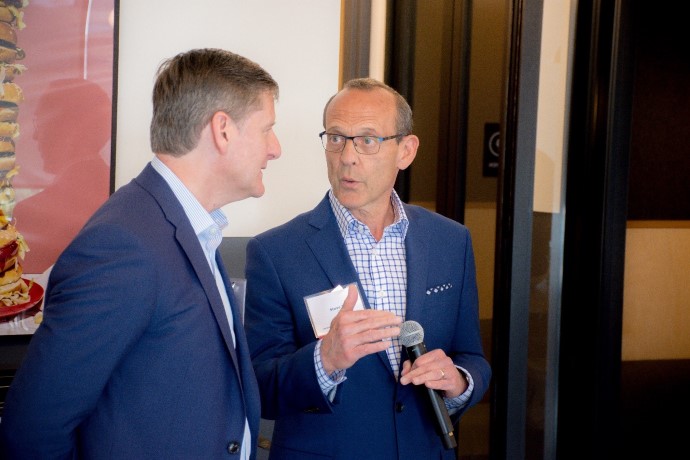
Steve: Everything manifests values. The hard work is understanding a company’s values not matching them. The challenge is not figuring out what the solution is; it is figuring out what the problem is…if you are not in the problem finding- business, and you are just in the problem-solving business you’re solving problems that already exist or that someone gave you. If you are in the problem finding business, you find out stuff the companies you are working with might not even be aware of. It’s easy to say all the things a company does- their brand promise, everything they do, their promises to their customers, how they look, how they operate, their view of their customers and employees. All of these things are vitally important. All these factors can manifest themselves in lots of ways that can inform design decisions.
The question is defining them, finding out “What is it?” and building agreement on “What that is.” Otherwise, you are only going to get it sort of right. When working for a specific client that is key to embarking on finding the right design solution. For co-working space, that is more of a generic “cool solution” as there is not a specific set of criteria or values outlined and there are multiple users and companies for each location. In other words, “this way” may be wildly different from company to company.
Really?
Kley: Let’s talk about the relationship between values, culture, and space. So often people come in for a tour and say “ I just need space for 20 people”. We need to ask them, “who are these people, where do they come from, what does your company do, why are you interested in wework? It might not be the place for you! Maybe it is, or maybe a future version of wework is for you. When we think about space – it’s a heavy responsibility on us, and we recognize that our members spend a lot of time in our space. We do try and work with potential members to understand their work and how our space can be a solution for their business. We are super-conscious of values and the relationship of that to the environment and actual physical space they will want to provide for their employees.
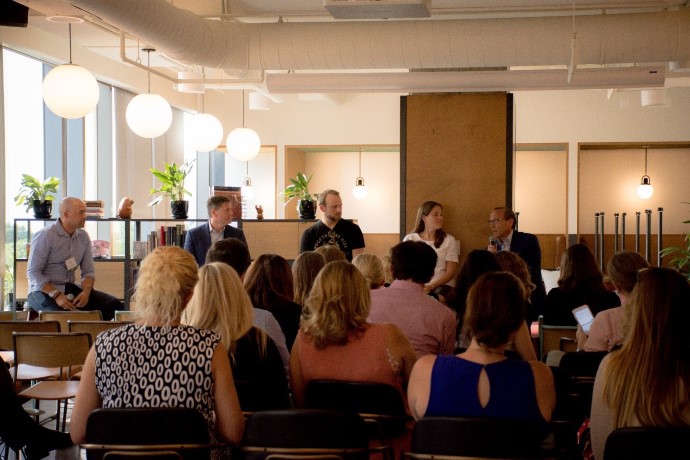
Why is defining that vision important?
Kyle: People want meaningful work…it is not always just about the money. I came to this conclusion after many years of posting jobs interviewing people. When they come in for an interview and walk into your space what are they going to see? Are they going to see something great like this (the wework space) or some dump? I can offer great benefits and a salary, but if I don’t have a nice work environment, that does factor into the equation. There are 168 hours in a week, a significant amount of that time in your workplace. Being at work has to be a good experience for people, and their workspace does play a part.
Space is a platform upon which you can do business
Kley: People that have not experienced intentionally designed space will be affected by the thought we put into the planning of our wework spaces. Thinking about where we put the common areas, what colors we use, how the circulation works, we give this a lot of consideration. We agree space is an enabler. But we also see it as a platform in two ways, one is digital and the second is physical. For those who have not been in a wework space before, everything is in its place for a reason; it is to support the people and the business tools that they use. While space may play a part in recruiting talent or attracting clients, the end game is that it is a platform to inspire a business to do things here that they could not do in a space that isn’t as enabled (tools and technology) that we have here.
The office is not dead
Steve: Here’s an interesting thing. A few articles in the Wall Street Journal and the New York Times recently addressed “the end of employees”; companies are divesting themselves of full-time employees. There are about 54 million people that are now free-lancing or work remotely. So, the question is: why do people need offices?
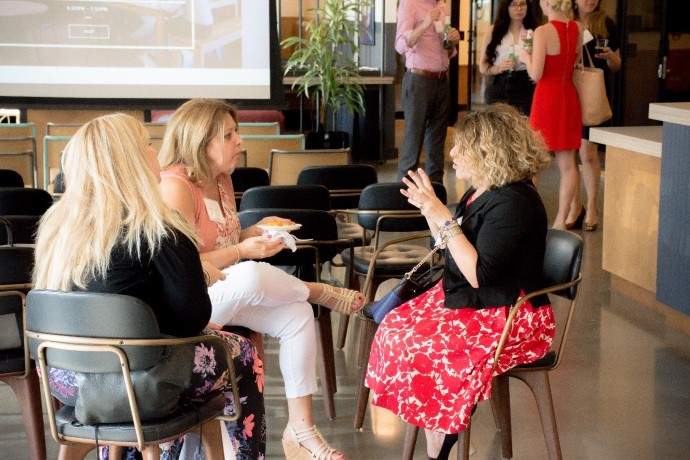
Kley: The ability to work remotely preserves the relationship between the employer and employee. The technology helps with that. What the remote relationship destroys is the employee to employee relationship. Yes, there are a lot of tools, when is the last time you had an inspiring video chat where everyone showed up on time, and you could see everyone and the communication link was stable? Back to the question of why do we need office space? Many businesses are producing things through collaboration and community. Even within their own company or potentially with others. Anecdotally, for wework, over 70% of our members have said that they have innovated with somebody else in our space. What is interesting is that over 50% of our members have said that they have done material business transactions with other people they have met in wework space. We recognize that is the platform of the coworking space. Providing a space for humans to interact is what is key, and that is what the most progressive companies are doing.
Jodi: Another way to answer the question of why we need offices can be answered by what happened at Yahoo and IBM and other companies that have called people back to the office. It was because the companies were struggling to maintain their culture and struggling to innovate. They want them to come back together to come up with the next big idea! Once they come up with that, they go back out to sell that idea.
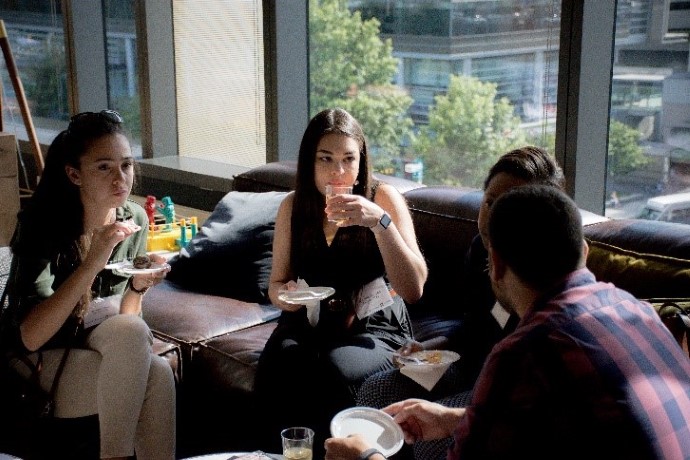
Kyle: I don’t think it is hard to have both; we have people in the office and remote. It is creating a process and having accountability within that process. You can easily integrate between remote and in-office employees. The remote employees want to be in the office as that is where all the energy is. On defining that culture, there a million consultants that want to tell you how to do that and most of the time they get it wrong. You have to sit down and figure that out yourself. It’s not an easy thing to do, but when you finish, it is very apparent. Key questions are what do you value? What is important to you? What are the core things that won’t change? For us it was defining our aspirational values, to be kind, and to have financial integrity. We want to grow and move our business forward; those are things you are striving to do. Those things don’t migrate to space, but they are foundational to defining the business.
Jodi: How do you come up with the questions to define the problems? This is when we are trying to find out who the client is and help them define their mission. We create a matrix of information. What is happening today, what do you want for tomorrow? It is the balance between quantitative and factual information. Getting a whole picture of what the organization is and what they want to be that helps us move forward.
Kley: The contrast for wework is we start with who we think the members are going be. How do we envision people interacting here? What do we think they want that they don’t know what they want? What have we seen that works well? We think there is a lot of magic in what we have tried to do. Using industry knowledge to lead the way is what we do, and sometimes we do get it wrong.
Steve: There is a lot of information about how a few people work or how independent people work in an aggregated way, such as (wework) does, This is not the same as analyzing a large company. A co-working approach is a median approach to the solution. Businesses have a lots of vastly different and competing priorities; the world struggles to find what is right. We may get mostly right; we struggle with the hard work of finding out how different they are. The ethos of our time is social impact and purpose driven, entrepreneurship; people want to work for companies that stand for something. What does that look like? As designers, we have to capture that physically. We have to get better at assessing what people need. People have to craft their own culture but we have to capture it. There are things that “space” just can’t fix.
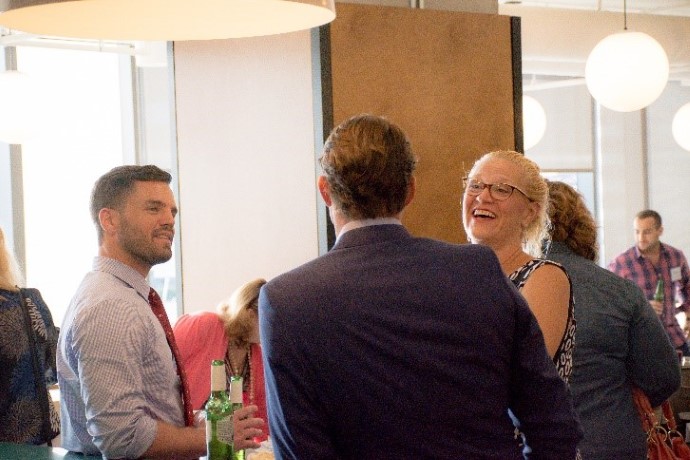
So, what comes next?
Steve: We may be at the end of the office as we currently know it. Wework is at the cusp of the transition of what office space might become. The tools to facilitate that transition are in development. How space is leased might change. The infrastructure of existing and new buildings may have to change introduce new work styles. There are so many vast changes across the market it is hard to predict where things will end up.
Kley: Office space as we know it may not be disappearing, it may just be changing. We all want to be someplace interesting to do our work. We are not quite sure what is next but we are working to address it. There are enough challenges to keep us all engaged.


